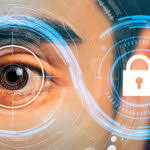How Wireless Covert Surveillance Cameras Work.
In a world where vigilance is paramount, wireless covert surveillance cameras have emerged as powerful tools for security and monitoring. Their ability to capture video and audio discreetly makes them invaluable for a variety of applications, from home security and nanny cams to loss prevention and private investigations. But how exactly do these seemingly inconspicuous devices function? Let’s delve into the fascinating world of wireless covert surveillance cameras and uncover their inner workings.
Capturing the World: The Image Sensor and Digital Conversion
At the heart of every covert camera lies the image sensor, typically a Complementary Metal-Oxide-Semiconductor (CMOS) or Charge Coupled Device (CCD). This tiny component acts as the camera’s ‘eye,’ converting incoming light into electrical signals. When light focuses through the lens onto the sensor, individual pixels register the intensity and color of the light. These signals are then processed and converted into digital data essentially, a collection of ones and zeros that represent the visual information. This digital data is then ready to be compressed and stored or transmitted wirelessly.
Transmission Magic: Wi-Fi and Cellular Connectivity
The wireless aspect is what truly separates covert surveillance cameras from their traditional counterparts. Once the video and audio are captured and converted into digital data, the camera utilizes either Wi-Fi or cellular networks to transmit this information to a remote location.
* Wi-Fi Transmission: Many covert cameras connect to existing Wi-Fi networks, allowing them to transmit data over the internet. This allows for live streaming and remote viewing of footage on smartphones, tablets, or computers via dedicated apps or web interfaces. The ease of setup and wide availability of Wi-Fi make this a popular choice.
* Cellular Transmission: Some advanced cameras use cellular networks (like 4G or 5G) to transmit data. This is particularly useful in locations where Wi-Fi is unavailable or unreliable. Cellular cameras typically require a SIM card and a data plan, but they offer greater flexibility and range.
Regardless of the chosen method, the transmission allows users to remotely monitor the environment from virtually anywhere in the world, providing real-time security and control.
Powering the Discreet Eye: Battery Life and Power Sources
A crucial aspect of covert surveillance cameras is their power source. They typically rely on one of two options:
* Rechargeable Batteries: Many covert cameras are powered by rechargeable batteries, offering portability and ease of placement. The battery life can vary significantly depending on the camera’s features, video resolution, and usage. Minimizing recording time and using motion detection features (discussed below) can help extend battery life.
* Direct Power Connection: For continuous operation, some cameras are designed to be plugged directly into a power outlet. This eliminates the need for battery replacements or recharges, ensuring uninterrupted surveillance.
Choosing the right power source depends on the specific application and the desired duration of surveillance.
Smart Surveillance: Motion Detection and Recording
To conserve battery life and storage space, many wireless covert cameras incorporate motion detection features. Using sensors, the camera monitors for changes in the environment. When movement is detected within its field of view, the camera automatically begins recording. This ensures that only relevant events are captured, reducing unnecessary footage and extending battery life. Motion detection sensitivity can often be adjusted to minimize false alarms triggered by pets or other minor movements.
Blending In: The Art of Disguise
Perhaps the most defining characteristic of covert surveillance cameras is their discreet design. These cameras are often disguised as everyday objects, such as:
* Smoke Detectors: Seemingly innocuous, a smoke detector can cleverly conceal a camera.
* Clocks: A clock on the wall or desk can be a perfect hiding place.
* USB Chargers: These devices blend seamlessly into any environment.
* Pens: Pocket-sized and easily disguised.
The compact size and clever disguises allow these cameras to blend into any environment, making them virtually undetectable to the untrained eye. This allows for discreet monitoring without arousing suspicion.
Conclusion: A Powerful Tool with Responsibilities
Wireless covert surveillance cameras are technologically advanced devices with a wide range of applications. Understanding how they function, from image capture and wireless transmission to power management and motion detection, allows users to choose the right camera for their specific needs. However, it’s crucial to remember that the use of surveillance cameras must always be conducted ethically and in accordance with local laws and regulations. Responsible use ensures that these powerful tools are used for security and peace of mind, rather than infringing on privacy.








